DRIVING ON SNOW OR ICE: A DRIVE-BY LESSON ON WHAT TURNS YOUR WHEELS
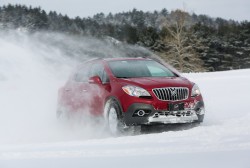
DRIVING ON SNOW OR ICE: A DRIVE-BY LESSON ON WHAT TURNS YOUR WHEELS
Vehicles act differently on snow and ice depending on whether they have front-wheel drive, rear-wheel drive, all-wheel drive and four-wheel drive. You may know which drive system your vehicle has, but do you understand how it works?
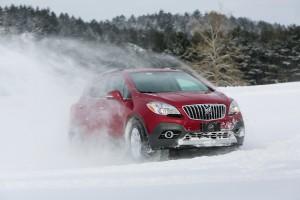 Here’s a brief spin through the options. Remember, almost every new vehicle includes an electronic traction control system that intervenes automatically to improve performance in slippery conditions.
Here’s a brief spin through the options. Remember, almost every new vehicle includes an electronic traction control system that intervenes automatically to improve performance in slippery conditions.
Front-wheel drive (FWD): Simply put, engine power is channeled to the front wheels to propel the vehicle. Standard on all Buicks, FWD is the most popular and prevalent system in the market because its compact setup enhances fuel efficiency and frees up more room inside the vehicle. Plus, the weight of the powertrain is concentrated over the driving wheels, so it offers good traction when it’s slippery.
Rear-wheel drive (RWD): As the name implies, engine power is sent to the rear wheels to propel the vehicle. In passenger cars, RWD reigned until the advent of FWD in the early 1980s. But RWD can more effectively handle higher engine power and higher vehicle weights, which is why it’s still favored in large trucks, larger performance vehicles, purpose-built race cars and law-enforcement pursuit use.
All-wheel drive (AWD): Don’t confuse all-wheel drive with four-wheel drive (below). Both engage all four wheels, but they’re designed and operate differently.
Generally, an AWD drivetrain operates as a FWD or RWD system – most are FWD. Buick’s AWD system pre-emptively sends power to front and rear axles on every launch to prevent wheel slip, then backs down if no slip occurs. Power is transferred automatically via a single-speed transfer case. (A transfer case connects to the transmission to split power between the front and rear wheels.) The beauty of AWD is no driver effort is needed to activate the system.
AWD scores high with buyers who want excellent on-road capabilities with the added traction on grass, mud, sand or gravel in light, off-road conditions where a front- or rear-wheel-drive vehicle may get stuck. Buick offers all-wheel drive on the Regal, LaCrosse, Encore and Enclave.
Four-wheel drive (4WD or 4×4): Four-wheel drive typically features a two-speed transfer case with high and low ranges for maximum traction. 4WD vehicles typically operate in RWD until four-wheel traction is required; and while most systems are driver-activated, many offer a setting that automatically engages the high range when it’s slippery. The driver must still engage the low range.
Found in large, rear-wheel-drive trucks and larger SUVs with additional ground clearance compared to passenger cars and crossovers, 4×4 still provides the best traction and capability in off-road conditions.
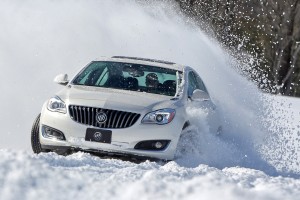 Buick is an international modern luxury brand offering vehicles with sculpted designs, luxurious interiors and thoughtful personal technologies, along with responsive-yet-efficient performance. Buick is attracting new customers with its portfolio of award-winning luxury models in North America and China. Learn more about Buick cars and crossovers at www.buick.com, on Twitter @buick, on Instragram, on Pinterest or atwww.facebook.com/buick
Buick is an international modern luxury brand offering vehicles with sculpted designs, luxurious interiors and thoughtful personal technologies, along with responsive-yet-efficient performance. Buick is attracting new customers with its portfolio of award-winning luxury models in North America and China. Learn more about Buick cars and crossovers at www.buick.com, on Twitter @buick, on Instragram, on Pinterest or atwww.facebook.com/buick
 CLICK HERE to get your TRUECAR SAVINGS CERTIFICATE for your new BUICK. Absolutely NO OBLIGATION.
CLICK HERE to get your TRUECAR SAVINGS CERTIFICATE for your new BUICK. Absolutely NO OBLIGATION.
 CLICK HERE TO FIND TODAY’S HOTTEST DEALS FOR ALL YOUR AUTOMOTIVE NEEDS.
CLICK HERE TO FIND TODAY’S HOTTEST DEALS FOR ALL YOUR AUTOMOTIVE NEEDS.

 CLICK HERE TO FIND THE BEST DEAL ON TIRES FOR EVERY MAKE AND MODEL CAR, TRUCK OR SUV. SPECIAL DISCOUNTS FOR TESTDRIVENOW FANS.
CLICK HERE TO FIND THE BEST DEAL ON TIRES FOR EVERY MAKE AND MODEL CAR, TRUCK OR SUV. SPECIAL DISCOUNTS FOR TESTDRIVENOW FANS. CLICK HERE to LIKE TestDriveNow.com on FaceBook!
CLICK HERE to LIKE TestDriveNow.com on FaceBook! FOLLOW Steve Hammes on Twitter @DriveTimeVideos!
FOLLOW Steve Hammes on Twitter @DriveTimeVideos!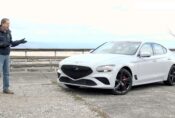 2023 Genesis G70 AWD TEST DRIVE
2023 Genesis G70 AWD TEST DRIVE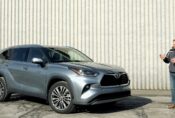 2022 TOYOTA HIGHLANDER HYBRID
2022 TOYOTA HIGHLANDER HYBRID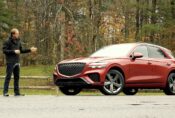 2022 GENESIS GV70 TEST DRIVE
2022 GENESIS GV70 TEST DRIVE